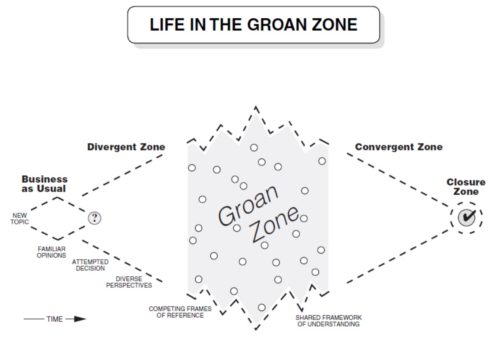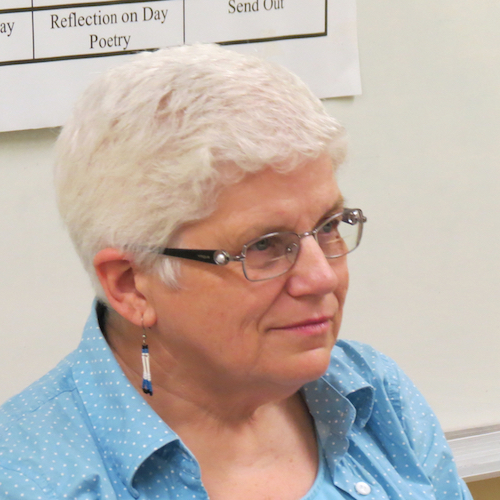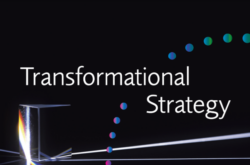Applying appropriate methods to ensure task completion and results is complex, including thorough planning of methods and executing those plans with the group. The first step is to deeply understand what results the client and the group need. The second is to create the rational aim for the session: to articulate in clear and simple language what results are needed. These are covered by the competencies in Managing Positive Client Relationships: Understand Client Needs.
Choosing the appropriate methods and sequencing them is the next step. Sam Kaner, in The Facilitator’s Guide to Participatory Decision-Making, 3rd Edition, suggests a simple and clear model for sequencing the journey of a group toward a decision. Starting with Business as Usual, he describes the steps of the Divergent Zone where diverse perspectives are shared, then the Groan Zone, then the Convergent Zone, where a shared framework of understanding is created. The whole journey ends with closure.

Some methods, such as the Consensus Workshop Method, can take a group through the whole journey. Brainstorming brings out the divergence, Clustering provides structure for the groan zone, and Naming highlights convergence, while the Resolve stage brings things to closure.
Other methods are best for certain parts. For example, World Café works very well in the Divergent Zone to open up, share, and understand diverse perspectives, but it is not a tool that creates convergence. An Underlying Contradictions workshop can address struggles in the Groan Zone. Prioritizing with dots, if used as a polling tool, can kickstart the Convergent Zone. The “Five Finger Voting” method can be an effective test of closure.
ORID, the thinking process that underlies the Focused Conversation and other ToP methods, is also a very helpful tool to ensure that methods used get to the needed results and decisions. (For more on this, see https://ica-associates.ca/news/orid-as-an-underlying-structure-for-effective-meeting-design/ )
Choose methods for each level that are appropriate for the content and the stage of the group’s journey. And be sure to leave enough time for working through the final decision and closure!






